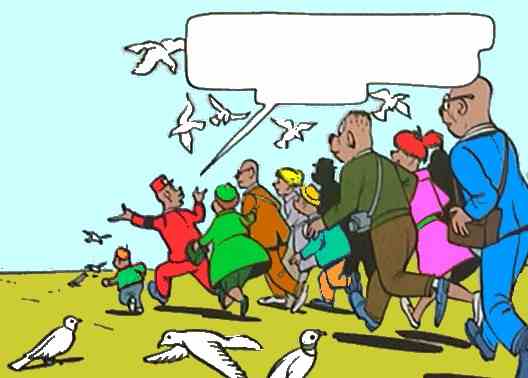

Usually, it is a fairly easy job to be a satirist when you are creating funny animal comic book stories, because the whole concept relies upon talking animals' humanlike reactions to the events and actions in the plots. Although it was certainly not Carl Barks' primary intention to place specific or obvious elements of satire in his stories, he would from time to time touch the subject in more or less transparent and straightforward connections. Sometimes he commented on everyday occurrences such as the eternal pursuit for money, and sometimes he commented on quickly passing fads such as fashion. Here are a few examples of the satirical Barks.
| The
characters I've always looked upon the
ducks as caricature human beings, Barks once said. But he took them
further on occasion to satirize the human condition. Of
the main characters, Scrooge can satirize avarice, Daisy
can satirize vanity and Donald can satirize anger. |
 |
Americanisms In a number of
stories we are given Barks' satirical views on some - at
the time - typical American events: |
|
Fads In
a number of stories Barks aired his opinions on apparent
'here today - gone tomorrow' events - which after all
have survived to this day: |
| Sarcasms In
a number of stories Barks made sarcastic remarks on
fairly timeless events: |
|
Animal
Quackers In 1997 the book Animal
Quackers was published. It contained photographs
of the numerous paintings Barks had for a long time
produced under his own grandiose titling Famous Figures
of History as they might have looked if their Genes had
gotten mixed with Waterfowl. The characters in the
Waterfowl series were always human but they had beaks and
similar features. |
| http://www.cbarks.dk/THESATIRIST.htm | Date 2006-05-24 |